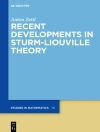This book examines a system of parabolic-elliptic partial differential eq- tions proposed in mathematical biology, statistical mechanics, and chemical kinetics. In the context of biology, this system of equations describes the chemotactic feature of cellular slime molds and also the capillary formation of blood vessels in angiogenesis. There are several methods to derive this system. One is the biased random walk of the individual, and another is the reinforced random walk of one particle modelled on the cellular automaton. In the context of statistical mechanics or chemical kinetics, this system of equations describes the motion of a mean ?eld of many particles, interacting under the gravitational inner force or the chemical reaction, and therefore this system is af?liated with a hierarchy of equations: Langevin, Fokker–Planck, Liouville–Gel’fand, and the gradient ?ow. All of the equations are subject to the second law of thermodynamics — the decrease of free energy. The mat- matical principle of this hierarchy, on the other hand, is referred to as the qu- tized blowup mechanism; the blowup solution of our system develops delta function singularities with the quantized mass.
Зміст
Summary.- Background.- Fundamental Theorem.- Trudinger-Moser Inequality.- The Green’s Function.- Equilibrium States.- Blowup Analysis for Stationary Solutions.- Multiple Existence.- Dynamical Equivalence.- Formation of Collapses.- Finiteness of Blowup Points.- Concentration Lemma.- Weak Solution.- Hyperparabolicity.- Quantized Blowup Mechanism.- Theory of Dual Variation.












